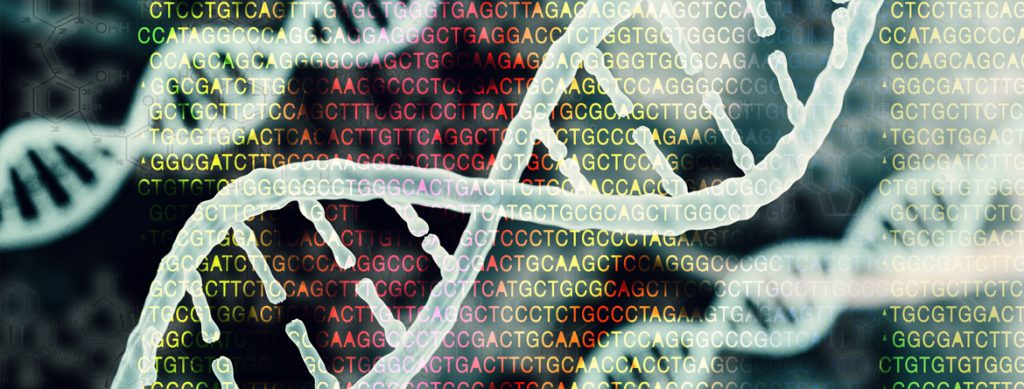Gene therapy is defined as the specific genetic manipulation and modification of an organism’s genome or genes through the delivery of therapeutic DNA or genes into host cells with little or no toxicity as a way of treating an inherited genetic disease or correcting a disorderly gene.
Gene therapy techniques are basically used to correct the genetic defects of somatic cells i.e. cells of the body that do not in any way contribute to hereditary (the transfer of genetic information from parents to their offspring’s via the genes).
It is a promising field of clinical research that is still an experimental discipline but it has the potential to revolutionize medicine in terms of the way genetic disorders are managed (i.e. using therapeutic DNA to repair defective gene copy in genetic disorder patients).
In gene therapy techniques, mutant genes of a cell are replaced with normal or wild type gene that carries therapeutic proteins or DNA expected to treat a particular acquired genetic disease (e.g. cancer and severe combined immune deficiency, SCID disease) in the affected human host. Faulty genes in people with genetic disorder or disease can be replaced with functional genes through a series of molecular/genetic engineering techniques in which the nucleic acid molecules are specifically modified to correct the anomaly. Gene therapy techniques as shall be seen later in this section are usually carried out in two main approaches.
- In vivo gene therapy (in which therapeutic DNA are transferred directly into the body). This method or technique of gene therapy is generally known as the direct delivery technique.
- Ex vivo gene therapy (in which some defective genes or cells are extracted from the body and treated in vitro, selected and thentransferred back into the body). This method is known as the cell-based delivery technique.
Therapeutic DNA or protein is to gene therapy what antibiotics are to conventional medicine. Instead of using the traditional antimicrobial agents (e.g. antibiotic) and chemotherapy known to medicine for treating some diseases, gene therapy employs “functional genes” as its medicine to treat defects in the gene of an organism. With therapeutic DNA, cellular dysfunction or genetic disease in a cell can be corrected by inserting functioning genes into the cell; and as the genetic disorder is being corrected by the functional gene, a normal or new cellular function is restored in the affected individual.
Genetic disorder is a disease that is caused by a mutation (i.e. a change) in the gene of an organism; and such molecular diseases can be passed on from parents to their offspring’s who inherit the defective gene. They usually arise when the genes or genetic compositions of an organism are altered so that the proteins they encode are incompetent to carry out their normal physiological function in the cell.
In order words, such defective genes begin to express itself in an abnormal way that affects the organism’s phenotype. The completion of the “human genome project” is a landmark for advancing gene therapy applications in clinical medicine because the practice will help to identify the genes responsible for a wide variety of human diseases with a view to correcting and treating them effectively. Information from the human genome project will help molecular biology scientists to compare the genetic makeup of normal and unhealthy individuals with a view to deciphering whether or not mutation in the gene of an organism could be responsible for some genetic disorders; and this can be improved upon by the techniques of gene therapy via targeted delivery of normal and therapeutic genes or DNA to treat genetic disorders.
The fact that we carry two (2) copies of practically all genes (with each derived from our mother and father) may be answerable to the question why most people (with defective genes) do not suffer any significant genetic disease. It is possible that virtually every human being on earth harbour one defective gene or the other, but these abnormal genes are apparent in some individuals (who show clinical signs of genetic disorders) and obscure or in unapparent in others who are unaware of any defective gene in them.
References
Alberts B, Bray D, Johnson A, Lewis J, Raff M, Roberts K and Walter P (1998). Essential Cell Biology: An Introduction to the Molecular Biology of the Cell. Third edition. Garland Publishing Inc., New York.
Dale J (2003). Molecular genetics of bacteria. Jeremy W. Dale and Simon Park (4th eds.). John Wiley & Sons Ltd, West Sussex, UK.
Edelstein, M. L., Abedi, M. R., Wixon, J., and Edelstein, R. M. (2004). Gene therapy clinical trials worldwide 1989-2004—an overview. J Gene Med, 6: 597-602.
Ferrua, F.; Brigida, I.; Aiuti, A. (2010). Update on gene therapy for adenosine deaminase-deficient severe combined immunodeficiency. Current Opinion in Allergy and Clinical Immunology. 10 (6): 551–556.
Gardlík R, Pálffy R, Hodosy J, Lukács J, Turna J, Celec P; Pálffy; Hodosy; Lukács; Turna; Celec (2005). Vectors and delivery systems in gene therapy. Med Sci Monit. 11 (4): RA110–21.
Horn PA, Morris JC, Neff T, Kiem HP; Morris; Neff; Kiem (2004). Stem cell gene transfer—efficacy and safety in large animal studies. Mol. Ther. 10 (3): 417–31.
S Li and L Huang (2000). Nonviral gene therapy: promises and challenges. Gene Therapy, 7:31-34. www.nature.com/gt
Salmons B, Günzburg WH; Günzburg (1993). Targeting of retroviral vectors for gene therapy. Hum Gene Ther. 4 (2): 129–41.
Sambrook, J., Russell, D.W. (2001). Molecular Cloning: a Laboratory Manual, 3rd edn. Cold Spring Harbor Laboratory Press, New York.
Sheridan C (2011). Gene therapy finds its niche. Nature Biotechnology. 29 (2): 121–128.
Tamarin Robert H (2002). Principles of Genetics. Seventh edition. Tata McGraw-Hill Publishing Co Ltd, Delhi.
Twyman R.M (1998). Advanced Molecular Biology: A Concise Reference. Bios Scientific Publishers. Oxford, UK.
Vannucci, L; Lai, M; Chiuppesi, F; Ceccherini-Nelli, L; Pistello, M (2013). Viral vectors: A look back and ahead on gene transfer technology. The new microbiologica. 36 (1): 1–22.
Discover more from #1 Microbiology Resource Hub
Subscribe to get the latest posts to your email.



